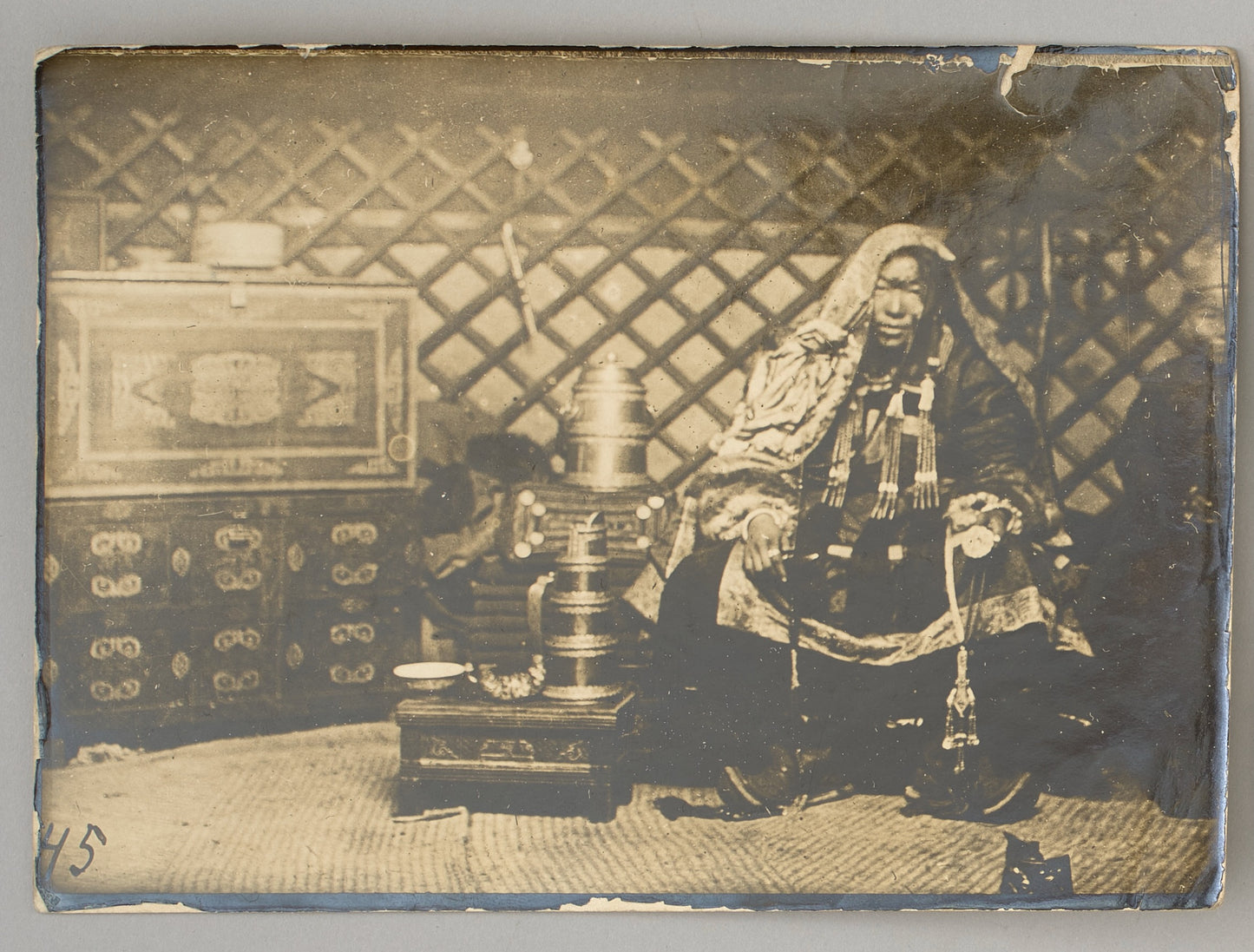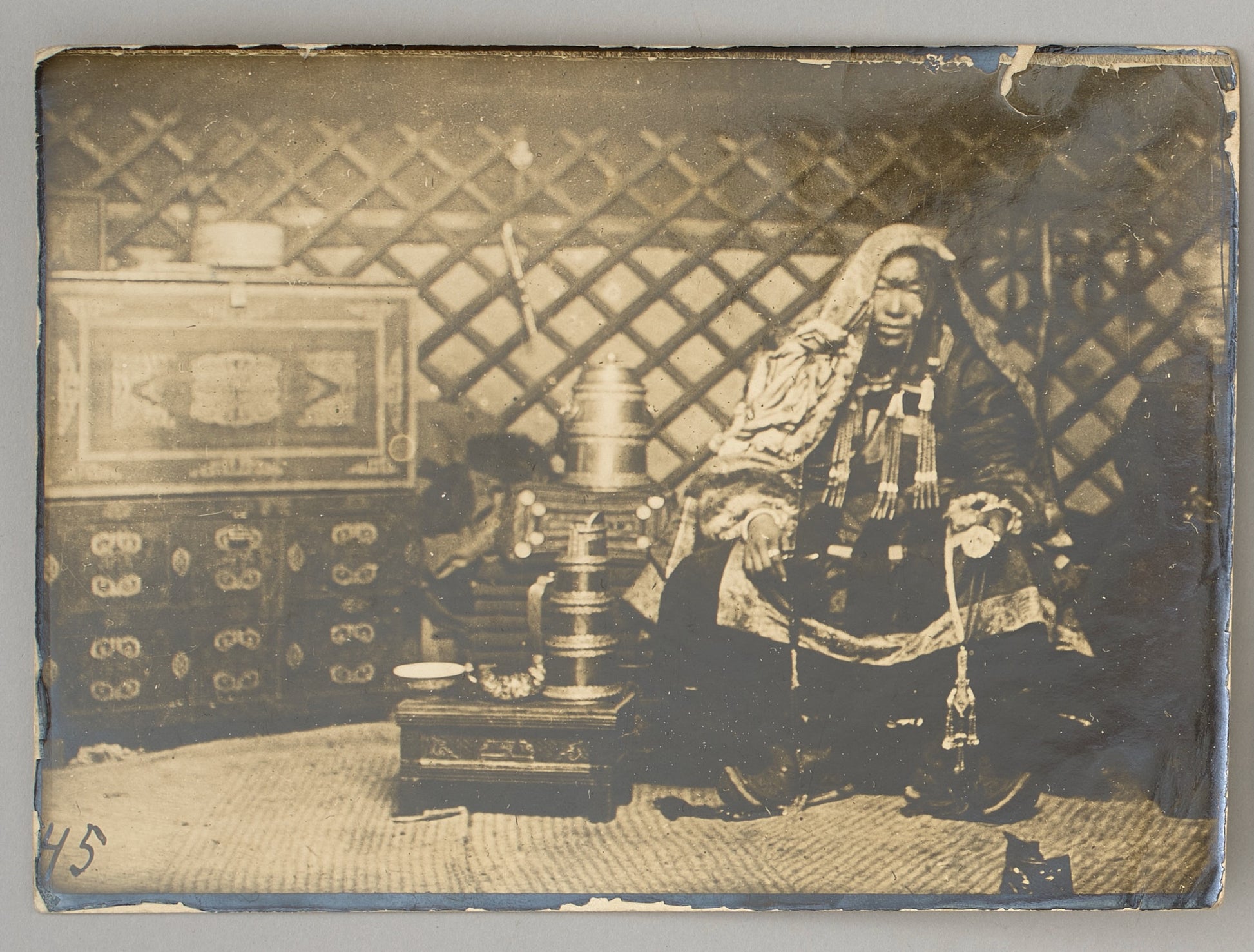The Wealthy Bride from Samagaltay, Tuva. Photography.
The Wealthy Bride from Samagaltay, Tuva. Photography.
Couldn't load pickup availability
The Wealthy Bride from Samagaltay, Tuva. Photography.
[Photo by F. Kon].
N.p., [first half of the 20th century].
13x17 cm.
Gelatin silver print, printed later.
Wear to edges, small losses to edges, owner’s mark to verso.
Rare.
This photograph captures the affluent bride from Samagaltay, a rural locality (selo) and the administrative center of the Tes-Khemsky District in Tuva, situated in southern Siberia. Samagaltay held the position of Tuva's capital until 1921. The bride is depicted inside a yurt, a customary circular tent that serves as a common dwelling, alongside a kitchen cupboard and a table adorned with a traditional teapot and piyala—a small bowl specifically used for drinking tea. Her hair is adorned with a chavaga, an exquisite piece of jewelry that holds great value and is typically passed down through generations. The bride wears the chavaga as a symbol of her transition into womanhood.
During the Qing dynasty, the last imperial dynasty of China, Tuva was historically a part of Outer Mongolia known as Tannu Uriankhai. However, in 1911, Tuva broke away and formed the Uryankhay Republic after the Xinhai Revolution, which led to the creation of the Republic of China. In 1914, it became a Russian protectorate and later transformed into the nominally independent Tuvan People's Republic in 1921, officially known as Tannu Tuva until 1926. This republic was recognized solely by its neighboring countries, the Soviet Union and Mongolia. However, in 1944, Tannu Tuva was annexed by the Soviet Union.
The photograph was originally captured by Feliks Kon (1864-1941), a Polish communist activist, politician, ethnographer, and journalist, in the late 19th century. While in exile for his revolutionary activities, he unexpectedly delved into ethnographic research in southern Siberia despite lacking any formal preparation for such a pursuit.
The copy of this photograph is currently preserved in the National Museum of the Republic of Tuva.


